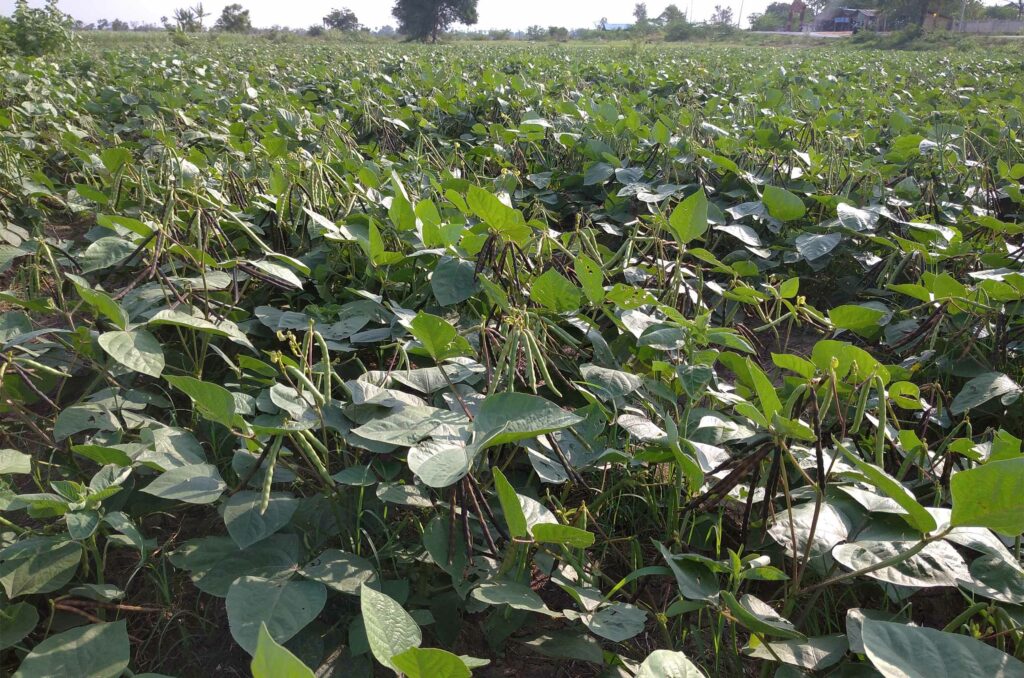Green grams, also known as Ndengu, are one of the most popular leguminous crops in Kenya, offering significant nutritional and economic value. Known for their versatility in making stews and other dishes, green grams are widely grown in semi-arid regions of Kenya due to their drought resistance and ability to thrive in low rainfall areas. This guide explores everything you need to know about green gram farming in Kenya, including ecological requirements, varieties, planting practices, and marketing opportunities.
Key Green Gram Farming Regions in Kenya
Green grams are mainly cultivated in several counties across Kenya, particularly in regions with semi-arid climates. These counties include:
- Machakos
- Kitui
- Meru
- Embu
- Tharaka Nithi
- Makueni
These areas are ideal for green gram farming due to their favorable climate and soil conditions. Farmers in these regions have been growing the crop for years, benefiting from both local and international markets.
Varieties of Green Grams Grown in Kenya
There are several varieties of green grams cultivated in Kenya, each with unique characteristics suited to different ecological zones and farming preferences. The common varieties include:
- KS20
- N26
- N22
- Biashara
- Ndengu Tosha
These varieties are chosen based on their yield potential, disease resistance, and adaptability to different climates. Some varieties, like Ndengu Tosha, are preferred for their drought tolerance, making them ideal for arid and semi-arid areas.
Ecological Requirements for Growing Green Grams
To grow green grams successfully, it is essential to consider several ecological factors, including soil, temperature, and rainfall.
- Soil: Green grams thrive in well-drained loam or sandy soils. Soil drainage is crucial as waterlogged conditions can damage the plants.
- Temperature: An optimum temperature range of 28-30°C is ideal for green gram cultivation.
- Soil pH: The soil should have a pH of 6.0 to 7.5 for the best growth.
- Altitude: Green grams can be grown at altitudes ranging from 0 to 1,600 meters above sea level.
- Rainfall: The crop requires annual rainfall of 350-650 mm. However, it can tolerate lower rainfall levels due to its drought-resistant nature.
Land Preparation for Green Gram Farming
Land preparation is critical to ensure optimal germination and growth. Properly preparing the land involves the following steps:
- Clearing the land: Remove all weeds and debris.
- Tilling: The soil should be tilled to a fine tilth to improve water infiltration and root penetration.
Land should be ready before the rainy season to ensure timely planting, as green grams perform best when planted at the onset of rains.
Planting Green Grams
Green grams are propagated using seeds. Planting should occur when rains begin to ensure the crop has enough moisture during its early growth stages. Follow these planting guidelines:
- Spacing: The recommended planting distance is 45 cm between rows and 15 cm between plants.
- Seed Depth: Seeds should be sown at a depth of 3.5 cm.
- Seed Rate: Approximately 4-5 kg of seeds per acre are needed, with two seeds sown per hole.
Green grams can be grown as a monocrop or intercropped with other crops like maize, sorghum, or cowpeas, which helps in maximizing land use.
Pests and Diseases Affecting Green Grams
Like all crops, green grams are susceptible to various pests and diseases. Below are the common pests and diseases, along with their control measures:
Pests:
- Cutworms
- Aphids
- Pod-sucking bugs
- Pod borers
- Whiteflies
- Foliage beetles
- Thrips
Control methods include the use of appropriate insecticides such as Profile, Pentagon, and Kingcode Elite.
Diseases:
- Rust
- Powdery Mildew
- Bacterial Blight
- Yellow Mosaic
- Anthracnose
- Damping Off
These diseases can be managed using fungicides like Pyramid, Ransom, Green Cop, and Taurus.
Harvesting Green Grams
Green grams are typically ready for harvest 60 to 90 days after planting, depending on the variety. The right time to harvest is when the pods have turned black and the seeds inside have hardened.
After harvesting, allow the pods to dry for a few days before threshing. Threshing can be done manually or using mechanical methods to extract the seeds from the pods.
The Market for Green Grams in Kenya
There is a robust and consistent demand for green grams in Kenya, both domestically and internationally. Farmers can sell their produce in:
- Open-air markets
- Cereals stores
- Groceries
- Supermarkets
- Hotels and restaurants
- Institutions like schools and hospitals
Prices for green grams vary depending on market demand, quality, and region. Locally, 1 kg of green grams sells for between Ksh 70 and Ksh 100, with prices sometimes higher during periods of low supply.
Economic Importance of Green Gram Farming
Green gram farming has become an attractive venture for many small-scale farmers in Kenya due to its low production costs, short maturity period, and reliable market. The crop is relatively drought-tolerant, making it ideal for regions prone to dry spells. Furthermore, the ability to intercrop green grams with other crops enhances food security and increases farm profitability.
Green gram (Ndengu) farming is a highly profitable venture for farmers in Kenya, particularly in semi-arid regions. The crop’s ability to thrive in low rainfall areas, coupled with its market demand, makes it an excellent choice for small and large-scale farmers alike. By adhering to the recommended ecological requirements, planting practices, and pest control measures, farmers can achieve high yields and benefit from the lucrative green gram market.
For those looking to diversify their farming activities, green grams are a sustainable and economically viable crop that requires minimal inputs while delivering high returns.





